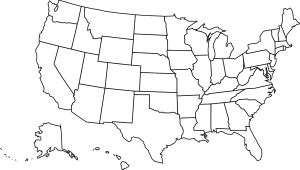The Open Enrollment Period is almost over: you only have until January 15 to purchase or change your plan! With that being said, though, some states have chosen to extend their deadline; they can do this because, under the Affordable Care Act (ACA), each state can run its own health insurance exchange, or Marketplace, in which people can shop for health insurance.
This state-based Marketplace is a government agency that is created and maintained by the state, and that offers subsidized ACA plans for residents of that state. You can buy a plan from your state’s Marketplace, or you have the option of buying off-exchange coverage from an insurance company; if you do this, you will not get premium subsidies and cost-sharing reductions– those are only available through the exchange. So which states run their own Marketplaces and what does that mean for you?
State-Run Vs. Federally Run Exchanges
When the ACA was passed in 2010, it provided funding and laid out rules for states to be able to establish their own exchanges; if states chose not to have their own exchange, the federal government would then step in and offer insurance for that state’s residents. So, many states chose to do it themselves so they could have more control of their Marketplace, and make it more profitable and sustainable. The federally run exchange, accessible through Healthcare.gov, is used in 36 states. The other 14 states (and Washington D.C.) have their own exchanges.

States With Their Own Exchanges:
- California (Covered California)
- Deadline is January 31
- Colorado (Connect for Health Colorado)
- Connecticut (Access Health CT)
- District of Columbia (DC Health Link)
- Idaho (Your Health Idaho)
- Maryland (Maryland Health Connection)
- Massachusetts (Massachusetts Health Connector)
- Deadline is January 23
- Minnesota (MNsure)
- Nevada (Nevada Health Link)
- New Jersey (Get Covered NJ)
- Deadline is January 31
- New York (New York State of Health)
- Pennsylvania (Pennie)
- Rhode Island (HealthSource RI)
- Deadline is January 31
- Vermont (Vermont Health Connect)
- Washington (Washington Healthplanfinder)
If you live in a state that has its own exchange, your health insurance plan options and prices might be a little different than if you only have the option of using Healthcare.gov or going off-exchange. In addition, depending on where you live, your OEP might be extended! But just because your state is in control of the Marketplace, that doesn’t mean you can’t find a great affordable ACA-compliant health insurance plan that is right for you by working with an EZ agent.
Looking For Insurance?
The best way to get the right plan for you and your needs is by working with a licensed health insurance agent. At EZ, our agents are highly trained and work with the top-rated insurance companies in the nation, in every state! We will connect you with a local agent who will go over your medical needs and budget, and sift through all the available plans in minutes. We’ll quickly find you a plan that will save you money – especially now, with the premium subsidies President Biden has extended to all Americans. You could save hundreds of dollars a year! No hassle and no obligation. To get free instant quotes, simply enter your zip code in the bar above, or to speak to a local agent, call 888-350-1890.









